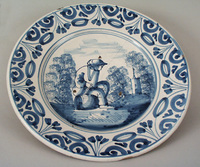93 412
rezultatų pagal
Tema
 Keramika
Keramika
Keramika
Inorganic, nonmetallic solid prepared by the action of heat
Royal Museums Greenwich
The Hunt Museum as part of the Art of Reading in the Middle Ages project
The Hunt Museum
The Hunt Museum as part of the Art of Reading in the Middle Ages project.
The Hunt Museum
National Museum of Transylvanian History
National Museum of Transylvanian History
Małgorzata Wojnowska-Sobecka
The International Center for Information Management Systems and Services
Dariusz Przewięźlikowski
The International Center for Information Management Systems and Services
The International Center for Information Management Systems and Services
The International Center for Information Management Systems and Services
The International Center for Information Management Systems and Services
The International Center for Information Management Systems and Services
Teresa Zagrabska
The International Center for Information Management Systems and Services
The International Center for Information Management Systems and Services
The International Center for Information Management Systems and Services
The International Center for Information Management Systems and Services
The International Center for Information Management Systems and Services
The International Center for Information Management Systems and Services
